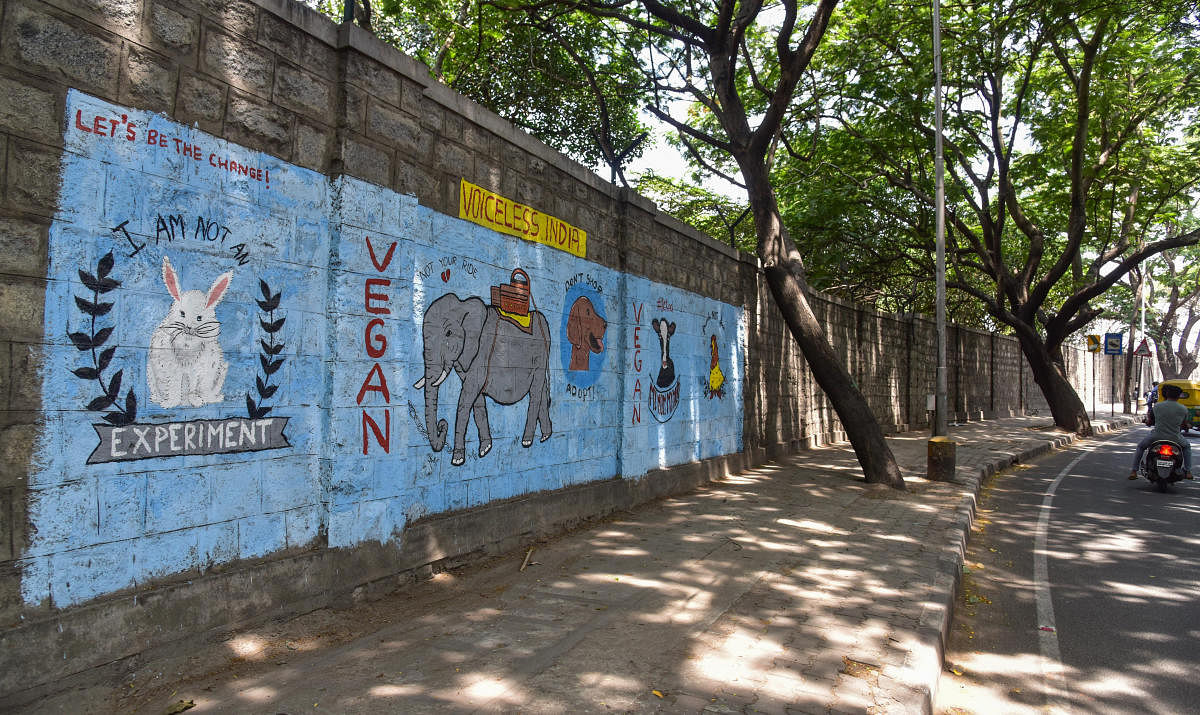
Lalbagh Botanical Gardens, a green expanse that every Bengalurean is legitimately proud of, is now in sharp focus for a reason that has many worked up: The Wall. A proposal to replace part of its concrete wall with grilled fencing has kicked up a mighty storm. Does this ‘aesthetic upgrade’ compromise the park’s very existence?
If Cubbon Park with its grilled barriers can look remarkably accessible, why let an ugly, poorly maintained concrete wall hide the green aesthetics of Lalbagh? This query, articulated by a few architects, has left green activists angry. Cubbon Park, they say, was repeatedly encroached precisely because it lacked a protective wall.
The raging debate has spilt over the social media and public platforms. Spearheading multiple campaigns to stop repeated encroachment of Cubbon Park, many from the Green Brigade are understandably wary of making any change to Lalbagh’s wall.
Pollution concerns
Grilled fencing, they contend, will increase pollution from the vehicular exhaust and put a halt to the much-cherished privacy of Lalbagh visitors. But from an aesthetic point of view, do the ugly concrete walls, much of it in dire need of repair, attract anyone besides urinating passersby and garbage-dumpers? This is a counter that has only intensified the debate.
The State Horticulture Department has kept options open although it has articulated the safety concerns associated with any change in the existing wall. The department top brass has proposed a discussion on the issue with multiple stakeholders.
However, the proposal is yet to percolate down within the department. A top official informs that the matter is currently not on its agenda. “Whenever such a proposal gains traction, we will seek everyone’s opinion,” the official says.
The department, he informs, had in the recent past upgraded stretches of the wall from Lalbagh main gate to Double Road and from West Gate to the Lalbagh Metro Station. A reality check, however, shows that the wall is in poor shape at multiple spots with bricks worn out and structurally weakened.
Visibility boost
In defence of his proposal for the grilled fencing, urban architect Naresh Narasimhan suggests that at least stretches of the wall can be replaced. “For instance, the section of the wall on R V Road, where there is no chance of any encroachment, can make way for grilled fences,” he elaborates. “What is the point in having a park that nobody can see from outside?”
Only the government has encroached upon Cubbon Park, he reminds. “All over Delhi, public parks, open spaces and museums are enclosed with high grrill fences. If museums with precious artefacts can exist safely with such fencing, why can’t Lalbagh?” he wonders.
Pilferage fears
But not everyone is convinced. A veteran of many legal battles to save Cubbon Park, Bimal Desai says he is dead against any alteration of the wall as Bengaluru’s population is going berserk. “In fact, the existing wall should go another five feet higher. A grilled fence will vanish and go to the scrap yard within two years,” he contends.
Ornithologist M B Krishna echoes the same concerns. “Removing the wall will be detrimental to the well-being of the park and the visitors as it will increase the air pollution levels within,” he warns. “The compound being impervious, blocks vehicular exhaust and noise pollution.”
Lalbagh was conceived in the mid-1700s by Hyder Ali. The garden was originally based on the principles of the Mughal Gardens. An estimated 673 genera and 1,854 species of plants are now part of this green expanse, enclosed with a boundary wall of about four kilometres.
Urban context
The context for the grilled fencing proposal is this: Two sections of the existing wall is now being torn down for repairs. “This gives us an opportunity to re-think how we can treat this edge in a manner more responsive to the urban context the park lies in,” Narasimhan explains.
In a presentation, he highlighted a contrast: “Existing: A high, solid boundary wall along a footpath creates dead spaces that end up being used by anti-social elements for storage and parking. Proposed: A transparent edge enhances the space by increasing visibility, giving the notion of inclusion of the green open space with the urban context.”
Walkers talk
What do walkers and regular visitors to Lalbagh feel about this plan? Senior citizen Radhakrishna who has been a regular at the park for the last four decades wants the existing walls to remain. “All these years, the compound has protected Lalbagh from dust, pollution, stray dogs and miscreants,” he argues.
Echoing this view is Ramachandra Gupta, a V V Puram resident who has been frequenting the park for walks the past 50 years. “How many security personnel can they post to make the grilled fence safe? The grilles will be gone in no time. Perhaps such fences can work in Delhi, not here,” he says.
Nuanced view
But the younger crowds have a more nuanced view of the entire plan. Pranav K B, a Shankarpuram resident for whom Lalbagh is the preferred choice for an evening run, takes a hygienic view. “I have seen many use the wall to urinate. I guess a grilled, transparent barrier can prevent that.”
As the battle rages both online and offline, one positive has emerged strong: Faced with the city’s depleting tree cover, an overwhelming majority of Bengalureans wants its surviving green heritage to be preserved at all costs. For many, an aesthetic upgrade is fine, but only if it guarantees the Park’s future without compromise.